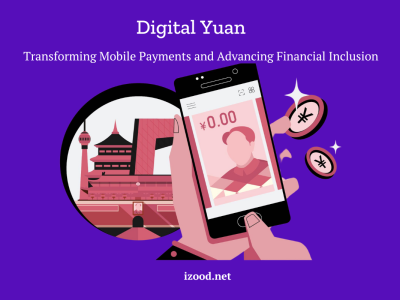
Digital Yuan, China’s central bank digital currency (CBDC), has been making waves in the world of finance and technology. As a programmer, understanding the intricacies of Digital Yuan is crucial, given its potential impact on the global financial landscape. Visit yuanedgeai.com they offer a unique perspective and opportunity in the realm of Digital Yuan, enriching your experience and knowledge in this area. This guide will provide a comprehensive look into the world of Digital Yuan development, exploring its history, key features, and how to build applications that leverage this innovative digital currency.
Understanding Digital Yuan
History and Evolution of Digital Yuan
Digital Yuan, also known as the Digital Currency Electronic Payment (DCEP), has been in development since 2014. The People’s Bank of China (PBoC) initiated the project to create a digital currency that would complement the existing monetary system. This extensive development period emphasizes the thoroughness and complexity of the digital currency.
Key Features and Characteristics of Digital Yuan
Digital Yuan is designed to function as a digital representation of the Chinese Renminbi (CNY). It shares some similarities with cryptocurrencies like Bitcoin but has distinct characteristics. These include centralization, government backing, and controlled issuance, making it more stable and less volatile than cryptocurrencies.
How Digital Yuan Differs from Cryptocurrencies
Unlike cryptocurrencies, which operate on decentralized blockchain networks, Digital Yuan is centralized and issued and regulated by the Chinese government. This crucial difference ensures better control over monetary policy, monetary supply, and anti-money laundering measures.
Developing for Digital Yuan
Programming Languages and Frameworks Compatible with Digital Yuan
Developers working with Digital Yuan can utilize popular programming languages like Python, Java, and C++. Additionally, frameworks like Hyperledger Fabric, Ethereum, and BSN (Blockchain-based Service Network) are compatible with Digital Yuan development.
Creating a Digital Yuan Wallet
To start building applications for Digital Yuan, developers need a Digital Yuan wallet. These wallets are essential for managing digital assets and facilitating transactions. Programming a Digital Yuan wallet involves connecting to the official Digital Yuan network, ensuring security protocols, and enabling secure transactions.
Secure Coding Practices for Digital Yuan Applications
Security is paramount when developing Digital Yuan applications. Developers must implement robust security measures, including encryption, authentication, and secure coding practices, to protect users’ funds and data. Vulnerabilities in Digital Yuan applications can lead to significant financial risks, so diligence is essential.
Building Digital Yuan Applications
Use Cases for Digital Yuan Applications
Digital Yuan has a wide range of potential applications, including retail payments, cross-border transactions, smart contracts, and supply chain management. Developers can tailor their applications to address specific use cases and tap into the growing demand for digital currency solutions.
Steps to Develop a Digital Yuan Application
Building a Digital Yuan application involves several steps:
- Define the application’s purpose and target audience.
- Choose the appropriate programming language and framework.
- Develop the application’s core functionality, such as payment processing or smart contract execution.
- Test the application rigorously to identify and resolve any bugs or security vulnerabilities.
- Connect the application to the Digital Yuan network through APIs or SDKs.
- Ensure regulatory compliance and security measures are in place.
- Launch and promote the application to potential users.
Case Study: Building a Digital Yuan Payment Gateway
Let’s explore a case study of developing a Digital Yuan payment gateway for an e-commerce platform. This gateway would enable customers to make purchases using Digital Yuan seamlessly. The process involves integrating Digital Yuan APIs, ensuring secure transactions, and providing a user-friendly experience.
Integrating Digital Yuan into Existing Systems
How Businesses Can Benefit from Integrating Digital Yuan
Businesses can leverage Digital Yuan integration to streamline financial transactions, reduce costs, and expand their customer base. By accepting Digital Yuan payments, companies can tap into the growing market of users who prefer digital currency for their transactions.
API Integration with Digital Yuan
Integrating Digital Yuan into existing systems requires API integration. Developers can utilize official Digital Yuan APIs to enable payment processing, account management, and transaction tracking. Robust API integration ensures a seamless experience for users and businesses.
Challenges and Considerations for Integration
Integration challenges may include compliance with regulatory requirements, managing the volatility of digital currencies, and ensuring the security of user data. Addressing these challenges is essential to building trust among users and maintaining the integrity of the integration.
Security and Regulatory Aspects
Security Measures to Protect Digital Yuan Transactions
Security is paramount in the world of digital currencies. Developers must implement strong encryption, two-factor authentication, and regular security audits to safeguard Digital Yuan transactions from threats such as hacking and fraud.
Regulatory Compliance for Digital Yuan Developers
Complying with relevant regulations is essential when developing Digital Yuan applications. China has specific regulations governing digital currencies, and developers must stay informed and adhere to these guidelines to avoid legal complications.
Handling User Data and Privacy Concerns
Respecting user privacy and data security is crucial when dealing with Digital Yuan applications. Developers should adopt data protection measures in line with international standards and ensure that user information remains confidential.
Future of Digital Yuan Development
Emerging Trends in Digital Yuan Development
The Digital Yuan ecosystem is rapidly evolving, with new trends such as decentralized finance (DeFi) applications, stablecoins, and cross-border payment solutions emerging. Developers should stay updated on these trends to remain competitive in the market.
Potential Impact of Digital Yuan on the Global Economy
The global adoption of Digital Yuan could have far-reaching implications for the international financial system. As a programmer, understanding these potential impacts can provide insights into future opportunities and challenges.
Opportunities for Developers in the Digital Yuan Ecosystem
The growing demand for Digital Yuan applications presents exciting opportunities for developers. Whether creating payment solutions, smart contracts, or financial products, the Digital Yuan ecosystem offers a dynamic space for innovation and entrepreneurship.
Conclusion
In conclusion, Digital Yuan represents a significant development in the world of digital currencies. As a programmer, exploring the intricacies of Digital Yuan, from its history to development and integration, can open doors to exciting possibilities. By staying informed, adhering to security and regulatory standards, and embracing emerging trends, developers can thrive in the ever-evolving world of Digital Yuan development.











